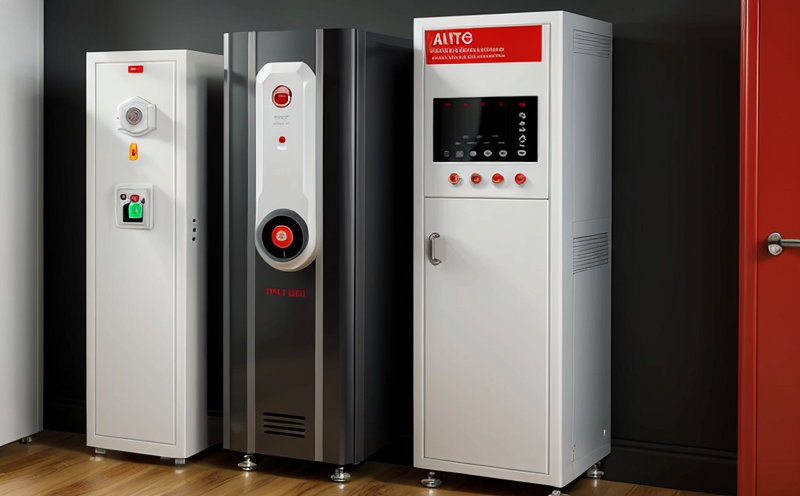Multi-Sensor Detector Performance Testing
The Multi-Sensor Detector Performance Test is a critical component in ensuring the reliability and accuracy of fire detection systems. This test evaluates how well multi-sensor detectors perform under various environmental conditions, including smoke, heat, and gas. The primary goal is to assess whether these sophisticated devices can accurately trigger alarms and provide timely warnings when needed.
Multi-sensor detectors are designed to work in tandem with different types of sensors—optical for detecting smoke, thermal for measuring temperature changes, and ionization for detecting specific gases like carbon monoxide. By combining multiple sensor technologies, these devices aim to improve detection capabilities by reducing false alarms while enhancing overall system performance.
During the test, specimens are subjected to controlled environmental conditions that simulate real-world scenarios such as smoky environments, high humidity levels, and varying temperature ranges. The detectors’ responses are then recorded and compared against established standards like UL 268 or EN 54-7:2019. These tests help ensure compliance with relevant international regulations and industry best practices.
One of the key aspects of this test is the ability to detect various types of smoke, including organic and inorganic materials. Organic smoke typically comes from burning paper or wood while inorganic smoke may result from metal fires or other industrial processes. Testing also includes scenarios involving different particle sizes and concentrations, which can affect how quickly a detector reacts.
Another important factor is the detector’s response time, measured as the time it takes for the device to go from an idle state to fully operational after being exposed to a fire hazard. This measurement ensures that alarms are activated promptly once a potential threat has been identified.
Test Parameters
- Exposure to various types of smoke (organic vs inorganic).
- Measurement of particle size and concentration.
- Detection range under different temperature conditions.
- Response time assessment from idle state to full operation.
Preparation involves setting up the detectors according to manufacturer specifications, calibrating them using precise instruments, and ensuring all components are functioning correctly before beginning the test sequence. During execution, continuous monitoring ensures accurate data collection throughout each phase of testing.
Why Choose This Test
Selecting Multi-Sensor Detector Performance Testing is essential for quality managers and compliance officers looking to ensure their facilities meet strict safety standards. By conducting these tests regularly, organizations can identify any weaknesses in their fire protection systems early on, allowing them to address issues before they become critical.
For R&D engineers involved in developing new products or improving existing ones, this type of testing provides valuable insights into how well innovations perform under real-world conditions. It allows teams to fine-tune designs based on empirical evidence rather than relying solely on theoretical models.
Procurement professionals benefit greatly from knowing which suppliers offer reliable and compliant solutions through rigorous testing procedures like these. They can make informed decisions about purchasing equipment that meets both internal requirements as well as external regulatory expectations.
Quality and Reliability Assurance
- Precision Calibration: Ensuring all sensors operate within specified tolerances before testing begins.
- Data Accuracy: Maintaining consistent accuracy in recording detector responses throughout the test.
- Environment Control: Creating controlled conditions that mimic actual operating environments accurately.
Environmental and Sustainability Contributions
- Eco-Friendly Materials: Selecting detector components made from sustainable resources whenever possible.
- Energy Efficiency: Designing systems that consume minimal power while maintaining high performance levels.





